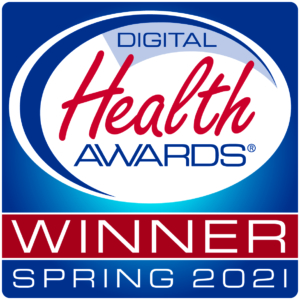Just about every aspect of our lives involves strategy and planning. Let’s use moving as an example. We likely plan this move in a way that will create more convenience for our lifestyle. Are grocery stores close by, a hospital or urgent care, childcare or a school, an interstate for easy access to work or general use? These conveniences can reduce stress and worry associated with difficulties accessing everyday necessities.
Healthy Community Design was a concept that could break down the barriers between communities and their necessities by establishing convenience to schools, healthcare facilities, and other benefits that should be accessible (CDC, 2014). This was implemented by the Centers for Disease Control and Prevention (CDC). While this initiative is no longer funded, the information provided can still serve value when determining how to improve communities. Being that this initiative is no longer federally funded this places even more importance for communities and local leaders to implement practices to better their neighborhoods. Based on the initiative, the way in which communities are designed could play a role in one’s physical and mental wellness. Obtaining a better understanding of this concept and its importance can help us build and improve more healthy communities.
Envisioning a Healthy Community Design
Overall, the objective of this concept is to promote good health by planning the outline of the community to create better accessibility for everyday essentials (CDC, n.d.). So what does this actually look like? The CDC listed out a number of benefits such as increasing physical activity by placing schools, businesses, and other essentials in walkable distance; reducing the use of transportation due to decreased distances, improving community morale by implementing centers and spaces to increase communication, and so forth (CDC, n.d.).
In essence this is all about bridging the gap between disparities. Now of course, in some communities the design landscape will be different. As we know, underrepresented populations tend to have more barriers within their communities compared to their White counterparts. Therefore the focus will be different especially when looking at available community resources and leadership. We must understand the needs of these communities first.
For example, in research conducted in South Los Angeles, California under the Healthy Community Neighborhood Initiative (HCNI), it was documented that the community is affected by high rates of preventable diseases, obesity, unemployment, home foreclosure, crime, lack of access to care, and other health inequities which affect a significant number of African American and Latino people in this area (Brown et al., 2016). The research conducted in this community was completed in partnership with local universities and organizations such as UCLA, Los Angeles Urban League, among others. The groups developed a framework to obtain a better understanding of the health of their community and factors influencing the outcomes. While the research studied a limited number of participants the information can still be useful in identifying factors that influence inaccessibility of resources in other communities.
Why Healthy Communities Are Necessary
Developing healthy communities has demonstrated to play an integral role in its residents’ lives. These types of communities aid in decreasing the disparities experienced. As previously mentioned, there is a requirement to understand exactly what the community needs in order to develop a strategy to address these issues. It takes a village to make change and support in understanding the needs of the community must come from a community, local, state, and federal level.
According to the CDC, healthy living aids in preventing chronic diseases and bridging the health inequities gap between ethnicities (CDC, 2017). Federally funded programs such as the CDC’s REACH, is dedicated to addressing such disparities and assisting in reducing them (CDC, 2022a). The REACH program collaborates directly with the community and local partners to make improvements for their residents’ health (mentally and physically), living environments, and overall quality of life. This initiative works because there is involvement from multiple parties in order to reach the community and satisfy its needs.
So not only is this collaboration important, policies play a role in maintaining these communities. The U.S. is no stranger to policies affecting access to basic needs. An example of this is outlined in the article, “Food Outcry: Dismantling Food Inaccessibility in BIPOC Communities”. This article highlighted how public policies have denied individuals in urban communities access to nutritious foods (Food Deserts) and funding entering the neighborhoods (redlining). How can we develop or maintain healthy communities with discriminatory policies as a barrier? Policies and zoning laws should be developed with the health of the community in mind. Planning and strategic development can help promote a sustainable life for residents (CDC, 2022b). These plans and laws involve creating communities that safely place schools, religious centers, businesses, etc. in close range and promote communication between residents. With developing these policies and laws, engaging the voices of residents helps to identify what will and will not work for the health of their community.
Doing the Work
We’ve discussed what healthy community design looks like and its importance but how do we achieve it? Developing these neighborhoods will require strategy and planning. What will best benefit the community in need? What types of resources is the community lacking? Is the community safe? These are questions to ask when planning and executing a healthy community design.
We’ve mentioned implementing policies and resident input to encourage this concept but how can this be carried out? Establishing programs and initiatives to engage the community in design decision making, testing development methods in at- risk neighborhoods; and conducting audits to identify housing and areas to promote physical activity (CDC, 2022b). The CDC also proposed the use of pop ups to obtain a better idea of what the community may or may not want to see permanently (i.e. pop-up shops and events).
There are a number of ways to improve neighborhoods. The following are tools I propose for improving and designing a more healthy community::
- Establish pop-up urgent care centers to assist communities with their health needs.
- Communities and their local leaders can partner with public transportation to create a health rideshare system for easy access to doctors appointments and pharmacies.
- Voting and becoming politically involved with the community. Voting is probably the number one tool to make change. We are a democracy and this needs to be utilized more. The changes can possibly be made when electing the RIGHT official.
- Partner with local schools, colleges, and universities to host community field days for the youth, maybe biweekly or monthly, to give them something to look forward to. This will encourage physical activity among youth and create a gathering space for the community as a whole.
Developing a healthy community is definitely possible. It just takes collaboration, strategy, and planning. Where people live has the ability to affect their overall quality of life. To ease associated stresses communities can work together to create a more sustainable life. Although the Healthy Community Design initiative is no longer federally funded, this does not mean the ideology can no longer be carried out. This initiative has the ability and has made changes in lives and the health of residents within communities across the US. We must continue to work together to build communities that promote longevity for generations to come.
References:
Brown, A. F., Morris, D. M., Kahn, K. L., Sankaré, I. C., King, K. M., Vargas, R., Lucas-Wright, A., Jones, L. F., Flowers, A., Jones, F. U., Bross, R., Banner, D., Del Pino, H. E., Pitts, O. L., Zhang, L., Porter, C., Madrigal, S. K., Vassar, S. D., Vangala, S., Liang, L. J., … Norris, K. C. (2016). The Healthy Community Neighborhood Initiative: Rationale and Design. Ethnicity & disease, 26(1), 123–132. https://doi.org/10.18865/ed.26.1.123
Center for Disease Control and Prevention (2014). CDC’s Built Environment and Health Initiative: Why invest?. https://www.cdc.gov/healthyplaces/why_invest.htm
Center for Disease Control and Prevention (n.d.). Healthy Community Design. https://www.cdc.gov/healthyplaces/docs/Healthy_Community_Design.pdf
Center for Disease Control and Prevention (2017). NCCDPHP: Community Health. https://www.cdc.gov/nccdphp/dch/about/index.htm
Center for Disease Control and Prevention (2022a). REACH. https://www.cdc.gov/chronicdisease/resources/publications/factsheets/reach.htm
Center for Disease Control and Prevention (2022b). Land Use and Community Design. https://www.cdc.gov/physicalactivity/activepeoplehealthynation/everyone-can-be-involved/land-use-and-community-design.html
India is interested in government policies and regulations regarding clinical research and mental health. She is a member of the HEET (health equity emissary team) , a health equity education and awareness channel committed to spotlighting health disparities impacting vulnerable populations.



